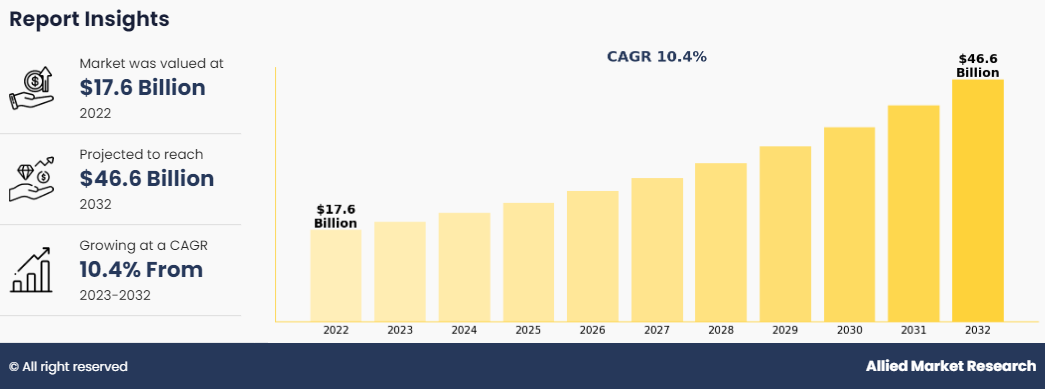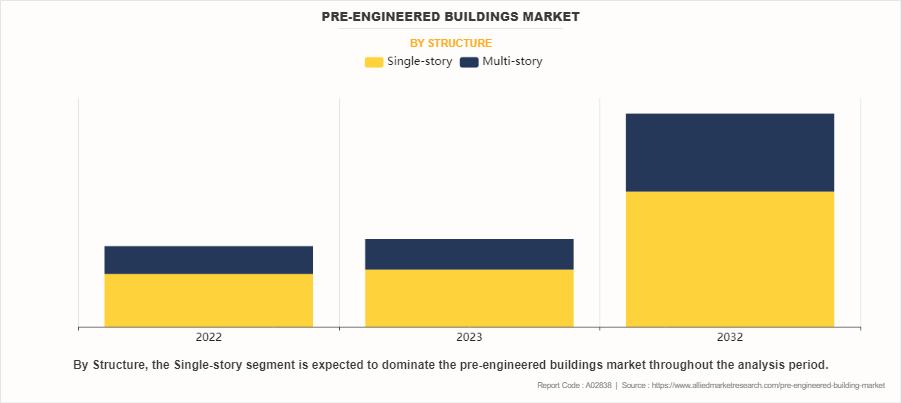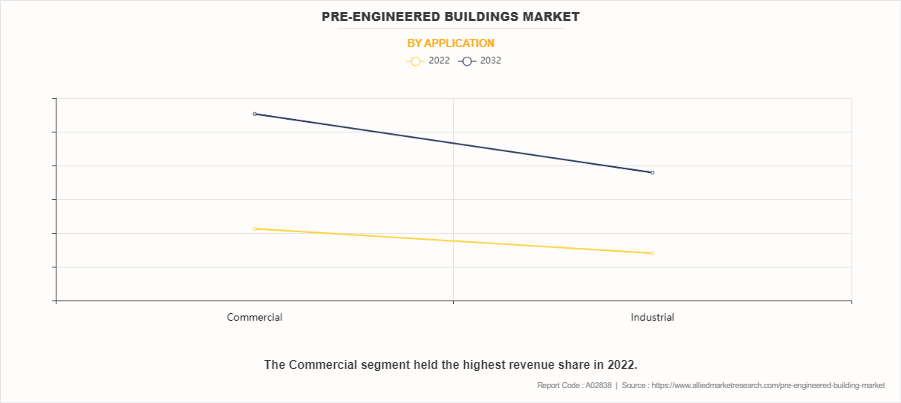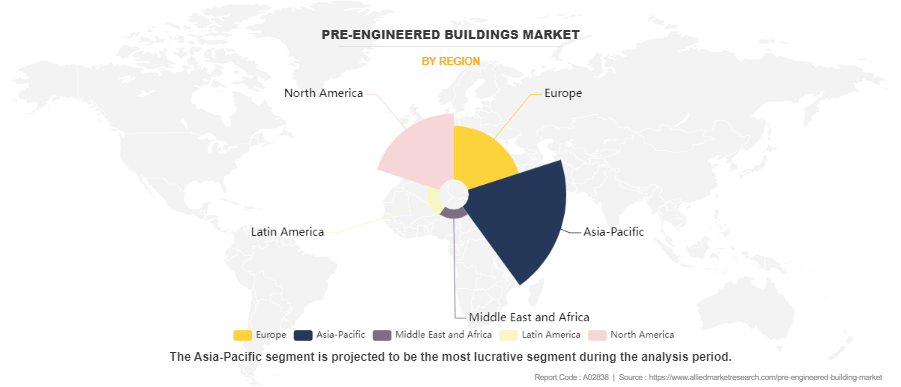Pre-Engineered Buildings Market insights, 2032

Report Key Highlighters
• The pre-engineered buildings market studies more than 16 countries. The analysis includes a country-by-country breakdown analysis in terms of value ($million) available from 2022 to 2032.
• The research combined high-quality data, professional opinion, and research, with significant independent opinion. The research methodology aims to provide a balanced view of the global market, and help stakeholders make educated decisions to achieve ambitious growth objectives.
• The research reviewed more than 3,700 product catalogs, annual reports, industry descriptions, and other comparable resources from leading industry players to gain a better understanding of the market.
• The pre-engineered buildings market share is marginally fragmented, with players such as BlueScope Steel, Era Infra, Everest Industries, Interarch Building Products, Jindal Buildsys, Kirby Building Systems, Lloyd Insulations, PEB Steel Buildings, Tiger Steel Engineering, and Zamil Steel. Major strategies such as product launch, partnerships, expansion, and other strategies of players operating in the market are tracked and monitored.
Market Dynamics
The pre-engineered buildings materials such as masonry block, roll-formed profiled steel sheet, tensioned fabric, glass curtainwall, precast concrete, and other materials are a cost-effective alternative for construction of buildings. Especially, the precast concrete is widely used to construct these buildings, as it is easily available in the market at reasonable cost. Moreover, the steel sheet and tensioned fabric is cheaper than other construction materials used for traditional construction.
In addition, the glass curtainwall is already having the perfect shape and can be easily structured into pre-engineered buildings. Thus, the construction of pre-engineered buildings is cheaper than the construction of traditional homes built using brick and mortar. Furthermore, minimal structural work is required to construct pre-engineered buildings, which in turn reduces the time required for building a structure. For instance, the structuring of pre-engineered buildings can be completed approximately within 2-3 weeks, where 4-6 months are required for brick and mortar. These factors are expected to boost the growth of the pre-engineered buildings market industry during the forecast period.
One of the limitations that affects the market is expensive pricing or cost of ownership. The price for pre-engineered buildings materials varies depending upon the size and other features. Moreover, increase in prices of raw materials increases the total cost of production, which may increase the market price of the pre-engineered buildings. In addition, the impact of economic factors around the globe and the fluctuating exchange rates of foreign currencies continue to influence the profit margins of pre-engineered buildings for the manufacturers. Thus, volatile prices of the raw materials used for these machines are expected to hinder the market growth during the forecast period.
Technological advancements, particularly the integration of Building Information Modeling (BIM) and computer-aided design (CAD) technologies offer lucrative opportunities for the growth of the market. By leveraging these advanced tools, PEB manufacturers and designers can streamline the entire building lifecycle, from conceptualization and design to fabrication, construction, and maintenance. BIM enables the creation of detailed digital representations of pre-engineered buildings, allowing for better visualization, coordination, and collaboration among stakeholders throughout the project. These technological advancements not only improve efficiency and accuracy in PEB projects but also offer opportunities for innovative design solutions, sustainable practices, and enhanced project management.
Segmental Overview


By application:

By region:
Competition Analysis:
Recent developments in hydraulic and electric linear actuators industry
In August 2022, APL Apollo unveiled its innovative Steel Building Solutions technology, aiming to revolutionize the construction industry. By inviting industry experts to share their insights and experiences with Tubular Technology, the company underscores its commitment to driving change and innovation. This technology represents a new approach ('NAYI-SOCH') to building and construction, offering a range of heavy structural tubular products such as Apollo Column tubes. These products are recognized as integral components of Pre-Engineered Buildings (PEB), delivering faster project completion, superior quality, strength, cost-effectiveness, and eco-friendly.
Key Benefits For Stakeholders
This report provides a quantitative analysis of the market segments, current trends, estimations, and dynamics of the pre-engineered buildings market analysis from 2022 to 2032 to identify the prevailing pre-engineered buildings market opportunities.
The market research is offered along with information related to key drivers, restraints, and opportunities.
Porter's five forces analysis highlights the potency of buyers and suppliers to enable stakeholders make profit-oriented business decisions and strengthen their supplier-buyer network.
In-depth analysis of the pre-engineered buildings market segmentation assists to determine the prevailing market opportunities.
Major countries in each region are mapped according to their revenue contribution to the global market.
Market player positioning facilitates benchmarking and provides a clear understanding of the present position of the market players.
The report includes the analysis of the regional as well as global pre-engineered buildings market trends, key players, market segments, application areas, and market growth strategies.
Pre-Engineered Buildings Market Report Highlights
| Aspects | Details |
| Market Size By 2032 | USD 46.6 billion |
| Growth Rate | CAGR of 10.4% |
| Forecast period | 2022 - 2032 |
| Report Pages | 180 |
| By Structure |
|
| By Application |
|
| By Region |
|
| Key Market Players | JINDAL BUILDSYS LIMITED, Kirby Building Systems, Everest Industries Ltd, Lloyd Insulations, tiger steel engineering l.l.c., Bluescope Steel Limited, interarch building products, zamil steel, Era Infra, PEB Steel Buildings |
Analyst Review
According to the CXOs of the leading companies, over the past decade, the market has experienced substantial growth, primarily due to rising demand for single-story pre-engineered buildings. Factors such as limited access to affordable space and cost-effectiveness have been significant drivers. Market participants are actively pursuing acquisitions and expanding their product portfolios to capitalize on opportunities for geographical and customer base expansion. Furthermore, key market players are focusing on producing affordable and efficient pre-engineered buildings to cater to a broader customer demographic.
The increasing emphasis on affordable warehouse structures has notably influenced market growth in recent years. Additionally, heightened investment in commercial construction activities is poised to propel the global pre-engineered buildings market forward. Moreover, the ongoing trends of industrialization and urbanization are further stimulating market growth.
Among the regions analyzed, Asia-Pacific is projected to lead in terms of revenue generation throughout the forecast period, followed by Europe, North America, and LAMEA.
The global pre-engineered buildings market was valued at $17,626.6 million in 2022, and is projected to reach $46,581.2 million by 2032, registering a CAGR of 10.4%.
The forecast period considered for the global pre-engineered buildings is 2022 to 2032, wherein, 2022 is the base year, 2023 is the estimated year, and 2032 is the forecast year.
The latest version of global pre-engineered buildings report can be obtained on demand from the website.
The base year considered in the global pre-engineered buildings report is 2022.
The major players profiled in the pre-engineered buildings include BlueScope Steel, Era Infra, Everest Industries, Interarch Building Products, Jindal Buildsys, Kirby Building Systems, Lloyd Insulations, PEB Steel Buildings, Tiger Steel Engineering, and Zamil Steel.
The top ten market players are selected based on two key attributes - competitive strength and market positioning.
The report contains an exclusive company profile section, where leading companies in the market are profiled. These profiles typically cover company overview, geographical presence, market dominance (in terms of revenue and volume sales), various strategies, and recent developments.
Based on application, the commercial segment was the largest revenue generator in 2022.
Loading Table Of Content...
Loading Research Methodology...



